The dust has begun to settle since Brendan Shanahan called a Friday afternoon press conference ahead of a long weekend and announced that Kyle Dubas will not be returning as General Manager of the Toronto Maple Leafs.
The fallout has been fascinating to follow. Fans and media alike have bounced between attempting to sort out what happened and trying to figure out what comes next.
In retrospect, the end result – following Kyle Dubas’ press conference last Monday – is not all too surprising, but the manner in which the breakup shook out perhaps was. After the Kyle Dubas press conference, I reported the following:
I have been told the organization was ready to move forward with an extension of some capacity heading into Monday’s press conference, and that Dubas’ comments have thrown a bit of a wrench into it. Ownership wants to know about potential burnout before greenlighting a new contract.
A few days later, Brendan Shanahan corroborated the report, stating he wanted to retain Dubas, but the press conference caused a “dramatic shift” in his thinking. It was an interesting way for Shanahan to describe it; obviously, it wasn’t that dramatic since Shanahan left the door open to continuing the relationship. Only after receiving a phone call from Dubas’ agent followed by an email from Dubas himself – stating, in some capacity, that he did want to return and continue as GM – did Shanahan make the decision to go in a different direction.
Frankly, this sets up a situation that could end up benefiting everyone involved. For Dubas, the job had clearly taken a toll on him and his family. As Shanahan himself noted, this business is tough on everyone’s family. You are in the public eye under a ton of scrutiny getting paid a lot of money. While it offers an enviable salary and lifestyle, it comes with intense pressure, and publicly waffling about whether or not you want to return in a press conference where you are clearly emotional should indicate, if anything, that you need a break.
Emotional decisions are rarely good ones, and Dubas made a point of noting that he was emotional in a job that requires a GM to be cold and calculated at a time like this.
Maybe Dubas could have successfully pushed aside those doubts, but it’s not unreasonable for Shanahan to want a GM that is all-in from the beginning with a clear, level-headed approach. There are 32 of these jobs available. In any line of work, it is really difficult to go from wondering whether you should be doing something at all to fully immersing yourself back into it at the snap of a finger.
While Shanahan didn’t immediately arrive at this conclusion, his final decision sets the table to bring in some fresh eyes to the organization, which isn’t necessarily a bad thing. It would be unfair to suggest the team plateaued, but it would be tough to run back the entire group from the GM to the coach to the core players.
Elliotte Friedman reported that prior to his dismissal, Dubas led a meeting to discuss the team with the coaching staff. Was the staff returning? Would he actually pull the trigger on a bigger trade to perhaps give the team a different look? They have strung together successful regular seasons and finally won a playoff round, but it’s fair to question the overall ceiling of the group and if they were capable of advancing much deeper as currently constructed (which includes the coaching staff).
Dubas admitted, “You get in between persistence and full belief versus being a little too staunch and rigid.” He has clearly been loath to move any player – or coach – that he has made a commitment to. A new set of eyes ideally provides a fresh perspective without any specific allegiances.
This can, of course, go the other way and quickly turn catastrophic. But this is where Brendan Shanahan probably isn’t getting enough credit.
He is the only brain trust who has been in the same role as the Leafs organization has ascended to a top-five(ish) team. To rate Kyle Dubas highly and not give any credit to the person who identified, hired, groomed, and promoted him through the ranks would be quite bizarre. The same person who also won the Mike Babcock sweepstakes – at a time when the Leafs were a laughingstock – and later convinced Lou Lamoriello to come to Toronto. It’s not to say that he is without fault and every decision was a slam-dunk win, but he has clearly been able to attract prized talent. To suggest that Shanahan would now hire and oversee a GM who is incompetent is inconsistent with his entire tenure to date.
The rumoured trade that he vetoed – Petr Mrazek and Matthew Knies for Brandon Hagel and Marc Andre Fleury – is certainly not a slam dunk either way. Hagel was really good this season and helped push Tampa over the Leafs last spring. Perhaps that would have been enough to swing the 2022 playoff series in favour of the Leafs. Perhaps Knies becomes a star for years to come. Time will tell, but if we believe that trade framework to be true, Shanahan vetoing it doesn’t exactly come across as out of touch or as the work of someone we wouldn’t want involved in the decision-making process. It is also completely normal for a GM to run trades by the President, and part of that process could involve convincing the person above them to sign off on the deal. This is not an abnormal reporting structure.
The profile of a GM replacement and the path moving forward
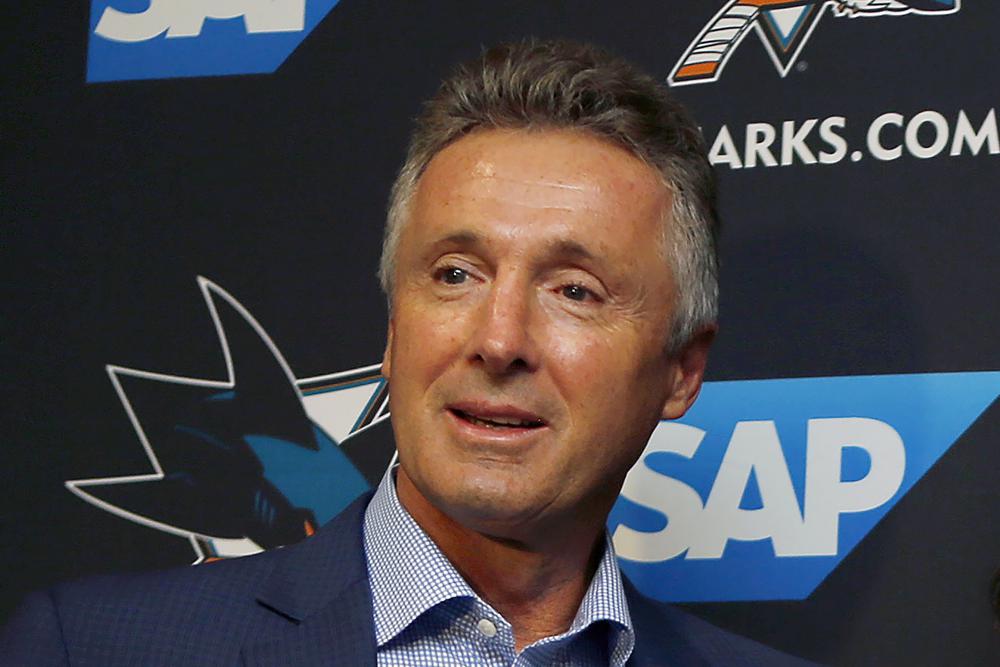
As the Leafs move forward, consider two things.
The first is that this is still an excellent team and there is no better job opportunity available right now. While big contract negotiations are looming, without lifting a finger, the incoming GM will have a roster in place roughly consisting of:
Forwards
Jarnkrok – Matthews – Marner
Knies – Tavares – Nylander
Robertson
McMann – Holmberg (RFA) – Lafferty
Defensemen
Rielly – Brodie
McCabe – Liljegren
Giordano – Timmins
Goaltenders
Samsonov (RFA)
Murray
Woll
There is elite talent, there is youth, and there is cap space to work with. To look at this situation and even remotely compare it to the Harold Ballard era is asinine. It’s never perfect, but the roster – along with all the other resources available in Toronto – makes this a great opportunity.
Where it could get dicey is if the organization botches the upcoming contract negotiations with star players over the next year. For now, a new GM could simply fill out the roster, and barring some unforeseen injuries, the Leafs should coast into the playoffs. Shanahan should have no problem attracting good talent to work here.
On the note about talent, it is important to point out that there are good candidates available, and Kyle Dubas is not coming off of some sort of infallible tenure in Toronto. He oversaw the age-20-to-25 years of Matthews’ and age-21-to-26 years of Marner’s careers, and they won one playoff series in that time. Yes, he had good moments and trade deadlines, and the team was generally successful in the regular season, but he would – and did – tell us that the goal was to win the Cup. They never came close at playoff time.
This could be an offseason that calls for a big trade, and that is not an area where Kyle Dubas has exactly thrived, particularly in the offseason. Last summer, his trade of note was acquiring Matt Murray (which so far has worked out as many critics predicted). The last time he traded a player of significance in the offseason it was Nazem Kadri (a clear miss). His other offseason trades were largely cap dumps where he paid up to move on from Petr Mrazek, Nikita Zaitsev, Patrick Marleau, Matt Martin, and Kasperi Kapanen.
We’ve said this before, but his best trade (made midseason) was probably acquiring Jake Muzzin, who was great when healthy, but he paid a big price and it’s a trade LA probably does over again (which doesn’t make it a poor move; it just makes it a trade where he paid a premium to acquire a good player, which is different than winning a trade based on the exchange of value).
There is very little in Dubas’ trade history to suggest he’s the absolute best person to make a move of significance this offseason. Outside of the deals mentioned, once John Tavares signed to start his tenure, his offseason work largely consisted of bargain-bin signings in free agency and TJ Brodie.
It now becomes a question of what traits Shanahan values as he charts out the replacement and the path forward.
An executive such as Dean Lombardi, for example, won multiple Cups as GM of the Kings. He pulled off huge trades – some of them heists – to acquire Mike Richards, Jeff Carter, Marian Gaborik, and even Dustin Penner. Some of these were big, difficult trades where Lombardi moved on from players the organization heavily invested in – and became great performers – such as Wayne Simmonds and Brayden Schenn, but it paved the way to championship victories.
Doug Wilson never did win a Cup with the San Jose Sharks, but we would be hard-pressed to find a GM with more blockbuster trades on his resume. Joe Thornton, Brent Burns, Dan Boyle, Dany Heatley, Evander Kane, Erik Karlsson — he was an aggressive trader who constantly added talent to his core as the Sharks remained one of the league’s elite teams for over a decade. He clearly demonstrated he can sustain success at a high level and build around his core. The Sharks even made the Cup finals eventually.
Mike Gillis, in his time with Vancouver, was able to negotiate team-friendly deals with his star players in order to ensure he had enough cap space to build a complete team. That is not something that has happened with this Leafs core to this point. The Canucks lost in Game 7 of the Stanley Cup Finals, but he put together one of the most dominant regular seasons we have ever seen in 2010-11, winning the President’s Trophy by 10 points, finishing first in goals per game, first in goals against per game, first in power play percentage, and third in penalty kill percentage. He has experience in a tough Canadian market.
Eric Tulsky has been a popular name making the rounds and for good reason. He is an integral part of a well-run organization. It’s also fair to consider the setup of the Hurricanes organization, where the General Manager is Don Waddell, who would fit under the “experienced” category. Waddell’s experience as a GM in the league prior to joining the Hurricanes came with the Atlanta Thrashers. This type of hire in 2018 would have sent the Toronto market into a frenzy, but now the Hurricanes are a franchise many want to emulate.
There is a model to follow, potentially, where the Leafs hire an experienced hand – in part to deal with the media in this city – while surrounding them with talented thinkers and individuals to provide support and guidance. Shanahan specifically noted that he wants an “open atmosphere where people can state their opinions to the GM, and the GM makes decisions. That is the way it has been. That is how I expect it to be going forward.”
This is not meant to serve as an in-depth overview of all possible candidates, but merely to demonstrate that there are legitimate options potentially available. We can nitpick each one until our faces turn blue, but they have track records of success and results in their careers beyond winning one playoff round. To frame the candidate pool as an instant downgrade when there are plenty of candidates who have achieved real success and have consistently demonstrated they can win negotiations is quite bizarre and lacks imagination.
It is obviously important for Shanahan to not only make the correct hire but to also surround the individual with the talent and expertise needed to take the next step. Whoever is successful is going to have a lot of work to do – opening contract negotiations, gauging trade value on potentially franchise-altering moves, probably hiring a new coaching staff, and filling out the roster – but there is plenty to build on in Toronto with the talent in place on a team that is still very much trying to break through at playoff time.


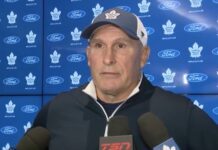
![Craig Berube on Nick Robertson joining William Nylander’s line: “If he gets to a good area on the ice, [Nylander] can find him… He has to put a couple in and get some confidence” Craig Berube, Toronto Maple Leafs head coach](https://mapleleafshotstove.com/wp-content/uploads/2024/10/berube-leafs-prac-218x150.jpg)
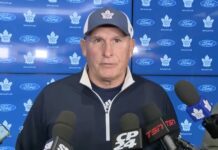
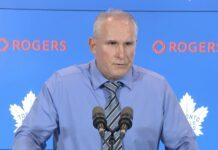
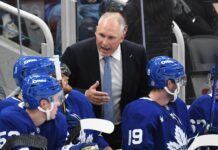
















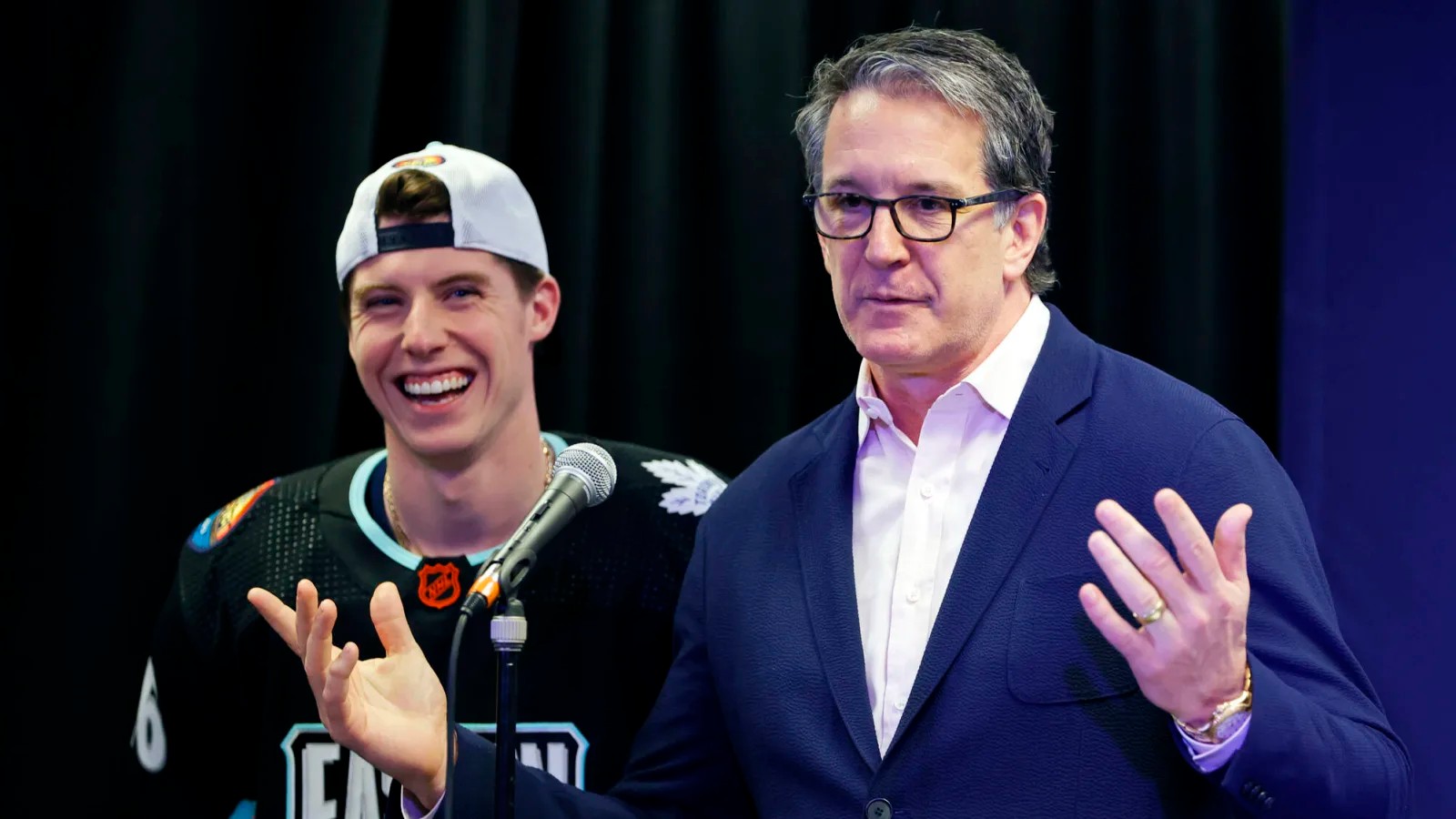
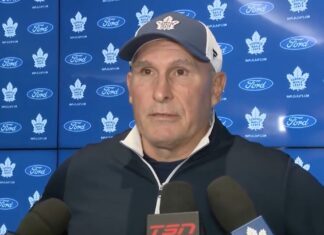
![Craig Berube on Nick Robertson joining William Nylander’s line: “If he gets to a good area on the ice, [Nylander] can find him… He has to put a couple in and get some confidence” Craig Berube, Toronto Maple Leafs head coach](https://mapleleafshotstove.com/wp-content/uploads/2024/10/berube-leafs-prac-100x70.jpg)







